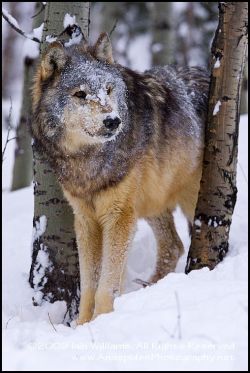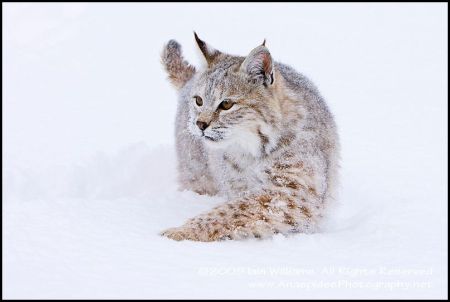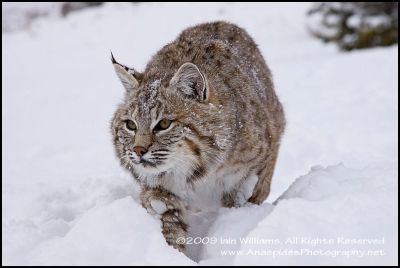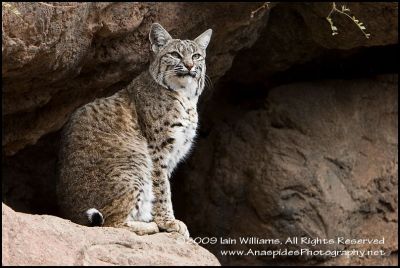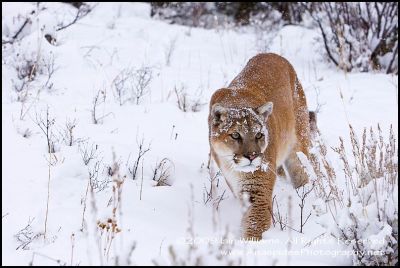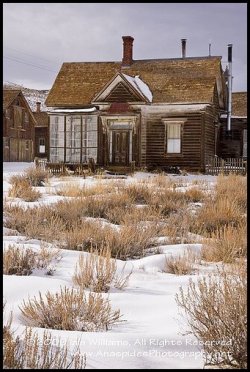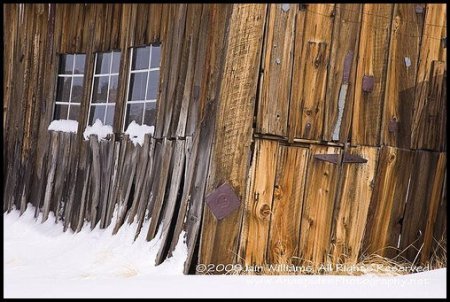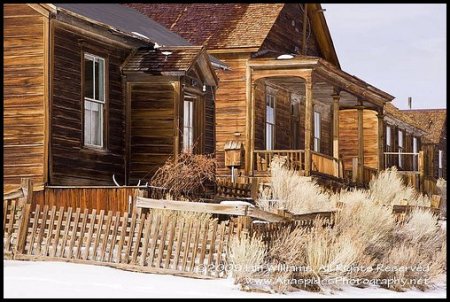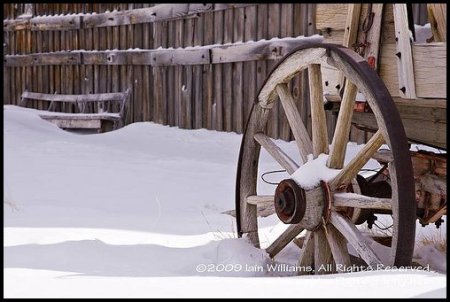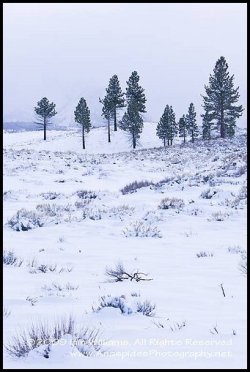 As we drove from the red rock country temperatures slowly dropped until they were hovering around 17F at West Yellowstone. Stopping in the township, we scoured the town for a suitable place to buy some lunch. The eatery chosen seemed suitable gauging from the numerous large pickup trucks and snow mobiles parked outside; the food was OK, however, the use of disposable utensils troubled to me. It seems everywhere you go in America they use disposable utensils (plates, cups, etc).
As we drove from the red rock country temperatures slowly dropped until they were hovering around 17F at West Yellowstone. Stopping in the township, we scoured the town for a suitable place to buy some lunch. The eatery chosen seemed suitable gauging from the numerous large pickup trucks and snow mobiles parked outside; the food was OK, however, the use of disposable utensils troubled to me. It seems everywhere you go in America they use disposable utensils (plates, cups, etc).
The only reason for the existence of West Yellowstone is as a stopping off point for the  western section of the Yellowstone National Park. I did note that the Post Office was well worth a visit. Unfortunately, I did not have time to stop and photograph the structure. If your in West Yellowstone make it a point to find it as the style, colour and texture of the building is very interesting.
western section of the Yellowstone National Park. I did note that the Post Office was well worth a visit. Unfortunately, I did not have time to stop and photograph the structure. If your in West Yellowstone make it a point to find it as the style, colour and texture of the building is very interesting.
The scenery from the road from West Yellowstone to Bozeman was absolutely Stunning. A winter wonderland with light dancing from snow laden conifers. A stream paralleled most of the route and it’s surface was mostly frozen with areas where cold clear water flowed from beneath the snow and ice overburden. The snow’s surface in places was marked with the tracks from passing animals. I really wanted to stop and photograph some of the area, however, time was not on our side as we had to make the next town by nightfall to begin the five day trip into Yellowstone National Park via snow coach.
The following day, although chilly was not as cold as I had envisaged; the temperature was around 30F which was quit civil for this time of the year. The day was spent traversing Lamar Valley in search of wildlife. Bison were plentiful in some areas as were elk and mountain sheep. At one stage we sighted a group of 7 coyotes, however, they were far too distant to obtain suitable images, and the snow too deep to give chase. Lamar Valley is usually very good for observing wildlife, however, on our visit the wildlife was sparse to say the least. It was hoped that the interior of Yellowstone would but more fruitful.
 YNP – Interior
YNP – Interior
The interior of Yellowstone National Park really has to be experienced during winter to fully understand the beauty of the region; forested areas, large open snow covered plains, and frozen rivers and lakes. During our stay in the interior we experienced a variety of weather conditions, from still chilly days in which the trees and bison were covered in snow and hoar frost, to blizzard conditions where visibility was minimal and heavy snow fell.
Wildlife in the interior of Yellowstone is prevalent mostly adjacent to the geothermal regions, where snow is melted by the warm ground conditions which create a constant temperature. However, there are animals that inhabit and roam less hospitable areas; big horn sheep occupy the rocky buttresses and coyotes and wolves traverse great distances in search if suitable prey.
The bison are the most prominent animal seen in Yellowstone and herds of 50 or more animals mill in large numbers along river banks eating grass that has been exposed either by snow melt, or by the continual swaying of the animal’s head, to and fro, to move aside snow. The bison are not as large as those I had observed in Custer State Park in South Dakota, however, they are still the largest mammal to be seen in Yellowstone. On several occasions bison were observed walking down and across the road we were traversing. The rule is simple when coming across large wildlife such as bison – they have right of way. An animal the size and weight of a bison would probably cause irreparable damage to any vehicle whose driver was foolish enough not to allow the animals right of way. Although bison are renown for being unstable in deposition toward humans, I didn’t observe this during my visit – perhaps the bison were too cold to care - or maybe I was too cold to notice!
 I found the best conditions in the interior was during snow falls (which was most of the time). The falling snow and cold conditions (colder with wind chill) provide an incite into how difficult it is for animals to survive in this hostile environment. Usually under these conditions, animals migrate to warmer climates, however, the geothermal regions within the park permanently melt snow and ice allowing stream water to flow during all seasons.
I found the best conditions in the interior was during snow falls (which was most of the time). The falling snow and cold conditions (colder with wind chill) provide an incite into how difficult it is for animals to survive in this hostile environment. Usually under these conditions, animals migrate to warmer climates, however, the geothermal regions within the park permanently melt snow and ice allowing stream water to flow during all seasons.
The melting of snow by geothermal activity and ready access of fresh running water, is the main reason that wildlife is present throughout the year in the interior of the park. In certain regions, birds are quite common and I observed golden eagles feeding upon carrion, small mouse-like mammals darting here and there adjacent to geothermal pools, and canada geese, golden eye ducks, and trumpeter swans patrolling waterways.
Memorable Observations
I observed much during my short stay in the interior, however, a few events stand out prominently.
The last day of my stay was a very cold and clear day (following a blizzard the day before where finding wildlife was difficult at best in whiteout conditions). The thermometer was around 10F, the day was crisp and the air exceptionally clean. A heard of bison were found surrounding a geothermal region warming themselves.
 As we approached and set up our tripods, the heard comprising several mothers and their young, and a few very large males, began to meander slowly along the river bank to cross the road. The light was low and the snow and hoar frost had not yet began to melt in the morning sun.
As we approached and set up our tripods, the heard comprising several mothers and their young, and a few very large males, began to meander slowly along the river bank to cross the road. The light was low and the snow and hoar frost had not yet began to melt in the morning sun.
As I photographed the bison, I noted that Rebecca was frantically waving to me some 200 yards distant. I thought she was photographing the frost on the trees, but I thought it odd that she was using a 300mm lens to do this. I decided to join her and as I pushed through the knee deep snow I saw her quarry – a lone snow covered coyote not 50 yards away from her - what a find!
The coyote was quite happy to just sit /stand near a geothermal feature – no doubt warming itself. I found out later that Rebecca had seen the coyote earlier and had tracked it to its current location. This was the only coyote that we managed to approach closely and spend time with.
Two further experiences worth noting was the sighting of a bobcat making its way to a den located high on a cliff face, and watching a group of several wolves congregating around the carcass of an animal on the snow plains of Lamar Valley.
 Challenging Photography
Challenging Photography
Photographing in below zero conditions is challenging. Gloves are usually required and great care must be taken not to place exposed skin on any metallic surface. This is to avoid the unpleasant experience of having your skin freeze to the surface. I made the mistake of leaning on a bridge siding thinking it was constructed from wood. Unfortunately for me it was steel, and my skin adhered to the metallic surface instantly!
Anyone who has used cameras in cold conditions will tell you that manipulating camera controls wearing gloves can be difficult, and I am no exception. Often, I would remove my gloves to allow easier and faster manipulation of the camera controls. This is possible, even in below zero conditions, but you must be watchful that your digits (fingers) do not begin harden as frost nip and frost bite set in.
 Camera batteries also need protection as cold conditions lower the battery capacity; I always carried a spare close to my body to maintain some warmth on the battery. Another challenge is changing lenses when it’s snowing. Any snow that falls on either the open lens or in the camera chamber will turn to water and cause possible camera/lens problems. I dropped my Canon 5D in the snow and the camera began to behave inconsistently from that point on until I dried the body and its interior overnight in a warm environment.
Camera batteries also need protection as cold conditions lower the battery capacity; I always carried a spare close to my body to maintain some warmth on the battery. Another challenge is changing lenses when it’s snowing. Any snow that falls on either the open lens or in the camera chamber will turn to water and cause possible camera/lens problems. I dropped my Canon 5D in the snow and the camera began to behave inconsistently from that point on until I dried the body and its interior overnight in a warm environment.
The last image (with the starburst) was taken on the last day of my trip. The day was crisp and clean and as the sun began to get closer to the horizon, the long shadows of the trees caught my attention. The steam from the geothermal activity can be seen the background.
If your in the area during winter, make it a point to stop by and experience the wildlife and frigid conditions on a first hand basis.
 Wednesday, March 11, 2009 at 6:45PM
Wednesday, March 11, 2009 at 6:45PM 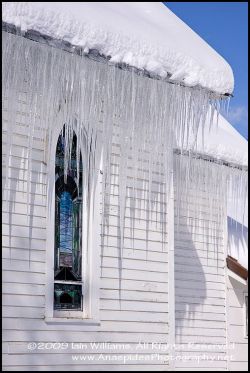
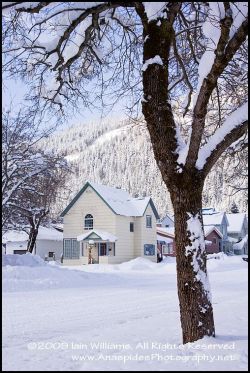 The following morning was a surprise as it has snowed heavily during the night and covering everything in fresh powdery snow. The hybrid had a foot plus of snow covering the vehicle. Wallace was stunning in its winter cloak, and rather than “make tracks” west we spent the morning mulling around town basking in the winter wonderland.
The following morning was a surprise as it has snowed heavily during the night and covering everything in fresh powdery snow. The hybrid had a foot plus of snow covering the vehicle. Wallace was stunning in its winter cloak, and rather than “make tracks” west we spent the morning mulling around town basking in the winter wonderland. 


